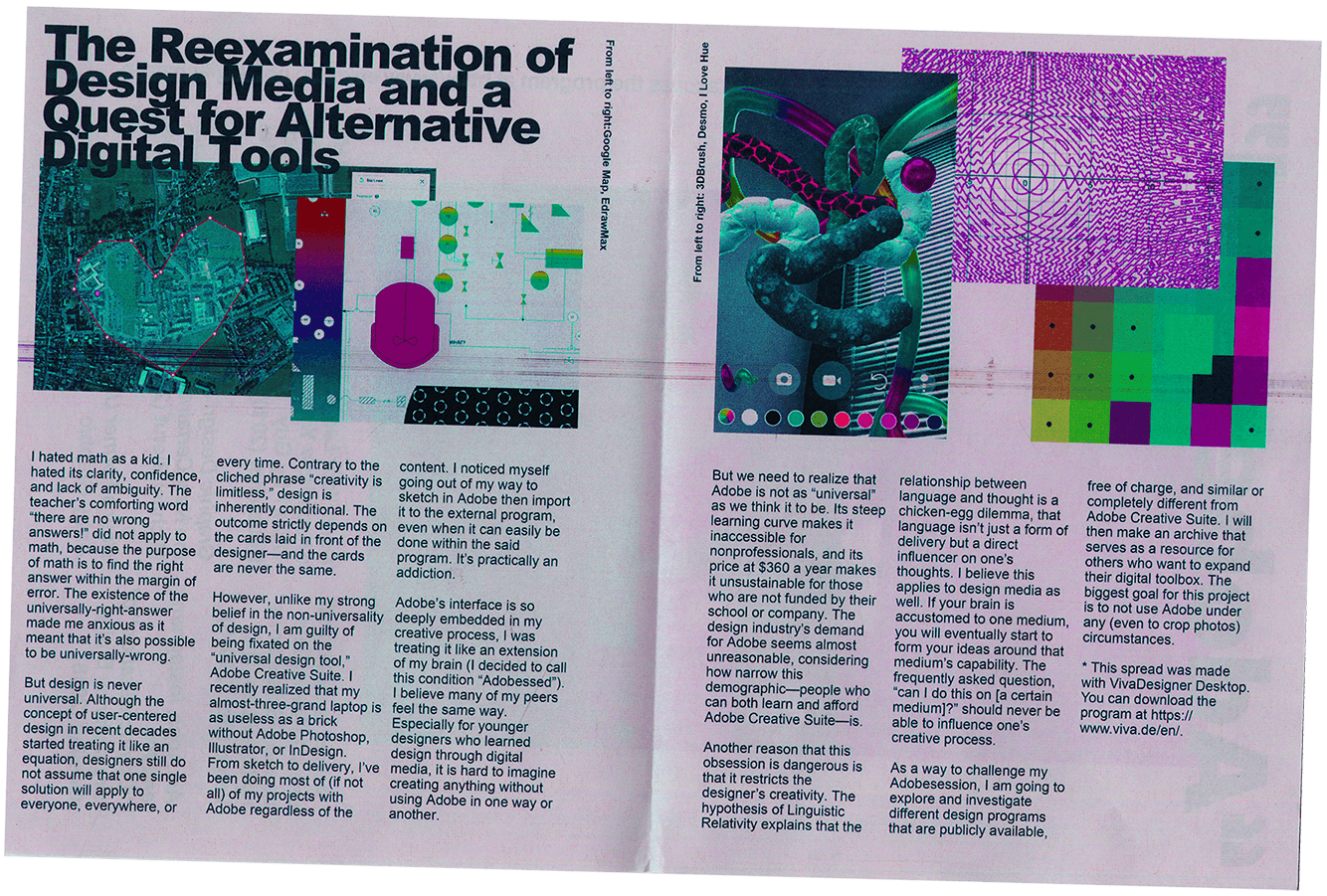

Click here to see the progress.
The Reexamination of Design Media and a Quest for Alternative Digital Tools
I hated math as a kid. I hated its clarity, confidence, and lack of ambiguity. The teacher’s comforting word “there are no wrong answers!” did not apply to math, because the purpose of math is to find the right answer within the margin of error. The existence of the universally-right-answer made me anxious as it meant that it’s also possible to be universally-wrong. But design is never universal. Although the concept of user-centered design in recent decades started treating it like an equation, designers still do not assume that one single solution will apply to everyone, everywhere, or every time. Contrary to the cliched phrase “creativity is limitless,” design is inherently conditional. The outcome strictly depends on the cards laid in front of the designer—and the cards are never the same.
However, unlike my strong belief in the non-universality of design, I am guilty of being fixated on the “universal design tool,” Adobe Creative Suite. I recently realized that my almost-three-grand laptop is as useless as a brick without Adobe Photoshop, Illustrator, or InDesign. From sketch to delivery, I have been doing most of (if not all) my projects with Adobe regardless of the content. I noticed myself going out of my way to sketch in Adobe then import it to the external program, even when it can easily be done within the said program. Adobe’s interface is so deeply embedded in my creative process, I was treating it like an extension of my brain (I decided to call this condition “Adobesessed”). I believe many of my peers feel the same way. For younger designers who learned design through digital media, it is hard to imagine creating anything without using Adobe in one way or another. It’s practically an addiction.
But we need to realize that Adobe is not as “universal” as we think it to be. Its steep learning curve makes it inaccessible for nonprofessionals, and its price at $360 a year makes it unsustainable for those who are not funded by their school or company. The design industry’s demand for Adobe seems almost unreasonable, considering how narrow this demographic—people who can both learn and afford Adobe Creative Suite—is. This addiction also restricts the designer’s creativity. The hypothesis of Linguistic Relativity explains that the relationship between language and thought is a chicken-egg dilemma, that language isn’t just a form of delivery but a direct influencer on one’s thoughts. I believe this applies to design media as well. If your brain is accustomed to one medium, you will eventually start to form your ideas around that medium’s capability. The frequently asked question, “can I do this on [a certain software]?” should never be able to influence one’s creative outcome.
As a way to challenge my Adobesession, I am going to explore and investigate different programs that are publicly available, free of charge, and similar or completely different from Adobe Creative Suite. I will then make an archive that serves as a resource for others who want to expand their digital toolbox. The biggest goal for this project is to not use Adobe under any (even to crop photos!) circumstances.



